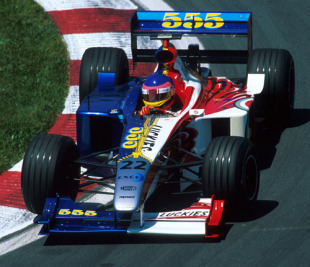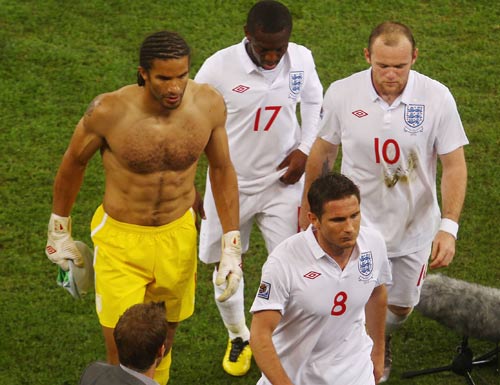1974 - 1996 Marlboro McLaren
McLaren won seven of its eight constructors' championships in Marlboro colours, making it one of the most iconic liveries of all time. Fans worldwide associated the red and white colour scheme with the success of Emerson Fittipaldi, James Hunt, Niki Lauda, Alain Prost and Ayrton Senna. For almost a quarter of a century there was a Marlboro-chevroned car on the grid. A lesser known variant was the yellow Marlboro Lights colour scheme that appeared on Keke Rosberg's car for the 1986 Portuguese Grand Prix. Marlboro's sponsorship was eventually dropped in 1997 when tobacco giant Phillip Morris moved its allegiance to Ferrari.
1972 JPS Lotus
Nostalgic images of Ronnie Peterson power-sliding a black and gold John Players Special (JPS) Lotus are firmly lodged in every 1970s F1 fan's mind. The cigarette brand first appeared on a Lotus in 1972 the same year Lotus won the title. JPS won the championship with Lotus again in 1973 and continued to sponsor the team until 1978, when Mario Andretti took the team's final title. The JPS liveried Lotuses returned in 1982 with less success, although parent company Imperial Tobacco did enjoy exposure with two future world champions, Senna and Nigel Mansell.
1975 Martini Brabham
The Martini stripes have been seen in many forms of motorsport but worked particularly well on the Brabham BT44B. The vermouth producers originally got involved with Porsche at Le Mans in the early 1970s but wanted to get the season-long publicity that only Formula One could bring. It started by sponsoring the Italian F1 team Tecno in 1972 and 1973 but didn't receive the front-of-the-grid exposure it desired. Eventually it struck a deal with Bernie Ecclestone's Brabham for 1975 to run red and blue stripes and a Martini logo on a white background, before it evolved to Martini Rossi red with the introduction of Alfa Romeo power in 1976.
1988 Benetton
As a clothing company, Benetton knew a lot about fashion and its multi-coloured B188 certainly stood out from the crowd in 1988. Its design, with blocks of primary colours, was instantly recognisable and gained the family-owned fashion company exposure as it aimed to push the ex-Toleman team up the grid. The livery was eventually dropped in 1991 with the introduction of cigarette brand Camel as a main sponsor.
1968 Gold Leaf Lotus
The first on-car sponsorship in Formula One turned the traditionally racing-green and yellow Lotuses red and gold. It may have upset the purists, car colours had previously been based on national colours, but it ushered a new era of colour, and more importantly money, into the sport.
1991 7 Up Jordan
Blue and green should never be seen … unless it's on a Jordan 191. The 7 Up livery on the very first Jordan F1 car turned almost as many heads as the team's impressive on-track performance. The car proudly sported the fizzy drink brand from every angle but, legend has it, Eddie Jordan wasn't receiving much money for the deal, and made 7 Up a title sponsor in order to give the impression his outfit was well funded. The livery lasted just one season but the plan appeared to work as by 1992 the team was inundated by sponsors.

- Drivers:
- Mario Andretti
- |
- Bernie Ecclestone
- |
- Emerson Fittipaldi
- |
- James Hunt
- |
- Eddie Jordan
- |
- Niki Lauda
- |
- Bruce McLaren
- |
- Nigel Mansell
- |
- Ronnie Peterson
- |
- Alain Prost
- |
- Keke Rosberg
- |
- Ayrton Senna
- |
- Jacques Villeneuve
- |
- Ricardo Zonta
1999 Zip BAR
British American Tobacco bought Tyrrell in 1998 hoping to gain as much exposure as possible for its cigarette brands. The original plan was to run Jacques Villeneuve's car with Lucky Strike livery and Ricardo Zonta's in 555 colours. However, the FIA didn't approve and ordered the team to race in just one colour. BAR painted a zip down the middle of the car, with one half in Lucky Strike colours and the other in 555, and one of the oddest liveries in F1 history was created.
1999 Buzzing Hornets Jordan
With increasing restrictions on tobacco sponsorship in F1, teams with cigarette advertising had to run their cars unbranded at certain events. This led to some rather bizarre slogans being plastered across cars; BAR ran Look Alike instead of Lucky Strike, Renault used Team Spirit instead of Mild Seven but the prize has to go to Jordan who introduced a complete Buzzing Hornets (instead of Benson and Hedges) livery in 1999. With red eyes on the nose cone and black stripes on the engine cover it probably attracted more attention for the sponsors than if the team had kept Benson and Hedges on the car.
2006 Silver McLaren
McLaren became the king of bling in F1 when it introduced a mirror-effect silver finish to its car for the 2006 season. Concerns that it might reflect light into the driver's eyes and that sponsor's logos wouldn't show up were proved wrong as the car rolled out at Bahrain for its debut. Before launching the shiny bodywork, the team ran an orange livery in pre-season testing as a tribute to the original colour scheme used by team founder Bruce McLaren.
1992 Canon/Camel Williams
Maybe it's because it's synonymous with success, but something about the Williams FW14B's livery just worked. Almost every child in Britain at the time had a Scalextric replica, and attempted to recreate the great battle at Monaco between Mansell and Senna in their bedroom. The design was simple but effective and was finished perfectly by the red No.5 standing proud on Mansell's nose cone.
Laurence Edmondson is an assistant editor on ESPNF1
© ESPN Sports Media Ltd.
 Laurence Edmondson is deputy editor of ESPNF1 Laurence Edmondson grew up on a Sunday afternoon diet of Ayrton Senna and Nigel Mansell and first stepped in the paddock as a Bridgestone competition finalist in 2005. He worked for ITV-F1 after graduating from university and has been ESPNF1's deputy editor since 2010
Laurence Edmondson is deputy editor of ESPNF1 Laurence Edmondson grew up on a Sunday afternoon diet of Ayrton Senna and Nigel Mansell and first stepped in the paddock as a Bridgestone competition finalist in 2005. He worked for ITV-F1 after graduating from university and has been ESPNF1's deputy editor since 2010

